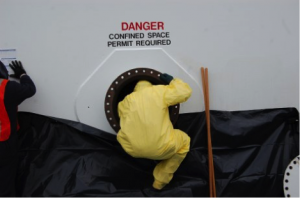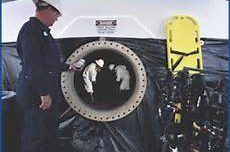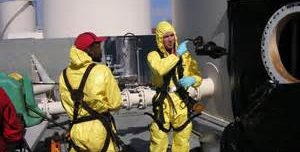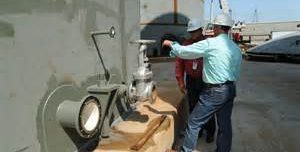
There are 2,200 storage tank terminal facilities worldwide, combining to create over 3.2 billion gallons of aboveground storage capacity. After many years in the aboveground storage tank industry and involvement in countless projects, there is one thing that we have learned for certain: tanks leak when it is least expected, and floating roofs will collapse. To avoid releases caused by issues like catastrophic bottom failures, cracked welds around nozzles and floating roof failures, tanks need to be routinely taken out of service and inspected by a certified third-party. This is not only good industry practice, but today there are many local, state and federal agencies that regulate the inspection of aboveground storage tanks.
The American Petroleum Institute (API) has published numerous standards pertaining to aboveground storage tanks, specifically API standard 653 which establishes the requirements for the inspection of aboveground storage tanks. According to this standard, the owners/operators are responsible for frequent “once-over” inspections of the tank. These inspections should take place as frequently as daily, and at least monthly. Periodically more thorough inspections should be conducted by a certified third-party inspector. The recommended frequency of these inspections is dependent on the type, size and contents of the given tank. However the standard recommendation is to perform an external inspection every five years and an internal inspection every ten years. To find out inspection requirements regarding a specific tank, visit the API website (www.api.org).
API 653 covers not only the requirements for how often an aboveground storage tank should be inspected, but also the certification process for the individual tank inspectors. There are many tank inspection companies and cleaning contractors in the industry. Caution should be exercised in order to insure a qualified, certified and properly trained contractor is selected to perform cleaning and inspection services. API Certified 653 Inspectors successfully complete courses followed by a stringent exam process.

The Tank Entry Supervisors must be highly qualified and certified for all project phases. The IQCIA TES program is the most highly respected certification in the world for Tank Entry Supervisors. The goal of this certification is to minimize the risks of confined space hazards and to improve the overall safety performance of tank maintenance operations. Quality tank cleaning contractors will have a certified IQCIA Tank Entry Supervisor onsite throughout the duration of each cleaning project.
There are many steps involved when taking an above ground storage tank out of service for the purpose of performing an inspection. The first step should always be to create safe work and execution plans. When preparing a tank for an inspection, safety is of the utmost importance, and this plan ensures steps are being taken to create a safe working environment, prevent spills, and protect assets.
Decommissioning plans are unique for each tank, with consideration being given to the characteristics of its contents; such as if the product is light or heavy, flammable or combustible, etc. Below is a general guideline for the steps taken to empty a tank, free it from residual vapors, and perform an inspection:
1. Empty tank / drain pipeline
2. Isolate the tank
3. Atmospheric testing inside tank
4. Floating Roof stabilization and Cribbing
5. Tank cleaning / vapor freeing
6. Waste management
7. Retesting for the presence of hidden vapor inside tank
8. Scan / inspection of the tank bottom, walls, welds, man-ways, and nozzles
9. Mechanical repairs, if necessary
10. Inspection of mechanical repairs
11. Re-commissioning of tank
The old adage, “if it’s not leaking, don’t worry about it” may have applied twenty years ago, but certainly not today. It is an expense to take a tank out of service for the purpose of an inspection, however tank inspections should be thought of as insurance. The reality is that the cost associated with performing routine tank inspections cannot come close to the cost associated with a catastrophic release of its contents.
The value of having a qualified and certified Tank Entry Supervisor on site to prevent damages and fatalities is priceless.






